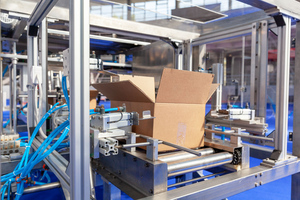Regulatory Requirements for Packaging Inspection Systems in the Philippines
Body
Ensuring that products are safe, properly labelled, and meet quality standards is essential in today’s marketplace. Regulatory requirements for packaging inspection systems in the Philippines are becoming more important as companies strive to meet both local and international standards. These requirements help protect consumers, support fair trade, and keep businesses competitive. This article explains the main rules, how inspection systems work, and why they matter for manufacturers and exporters.
Understanding the Regulatory Framework
The country has a number of institutions and laws that regulate packaging and labelling. Two of the most important legislation are the Food and Drug Administration (FDA) Act of 2009 and the Food Safety Act of 2013. These laws mandate companies to ensure that their packaging is safe, that their labeling is accurate, and that all of this is clear and concise. The Department of Trade and Industry (DTI), through its Bureau of Philippine Standards (BPS), also has an important role in creating standards and making sure that products meet them.
All consumer goods sold in the Philippines that are either locally made or imported need to have some information printed on the labels. Some of this data includes the item's trade name, the maker's name, quantity contents, and country of origin if imported. Some products, such as food, drugs, and toxic substances, have additional labelling requirements to ensure the protection of consumers.
To prove that a product conforms to Philippine standards, it needs to have a certification mark. Local products utilize the Philippine Standard (PS) mark, but imported products require an Import Commodity Clearance (ICC) mark. These are only issued if the product goes through inspection at the BPS.
The Role of Packaging Inspection Systems
Packaging inspection systems are equipment that assist firms in complying with these stringent regulations. They employ cameras, sensors, and even X-ray technology in some cases to inspect each package as it travels along the production line. These systems seek out issues such as improper labeling, damaged packaging, or omitted information.
For instance, in the food industry, inspection systems ensure that labels include all ingredients, allergens, and expiration dates. This is vital since a minute error could endanger consumers. In the pharmaceutical sector, inspection systems prevent contamination and ensure packages are sealed.
Meeting International Standards and Export Requirements
Filipino exporters and manufacturers also have to watch out for global regulations, particularly if they plan to export goods into markets such as the European Union. The new Packaging and Packaging Waste Regulation (PPWR) of the EU has stringent guidelines for packaging material, labelling, and recycling. Packaging going into the EU, starting from 2026, must be recyclable, reusable, and without some toxic chemicals. Labels need to explicitly indicate what material is used, and packaging needs to be minimal–no added layers or "cheat packaging" permitted.
Customs, Certification, and Pre-Border Inspection
In addition to local and international standards, the Bureau of Customs (BOC) in the Philippines has its own rules for imported goods. Products on the list of mandatory certification must get clearance from the BPS before they can be released from customs. Only particular documents, such as the Import Commodity Clearance (ICC), Certificate of Conditional Release (CCR), or Certificate of Exemption (COE), are acceptable as confirmation that the items meet Philippine standards.
The government is also rolling out new systems for pre-border technical verification (PTV) and cross-border electronic invoicing (CEI). These systems require that goods be inspected and certified by accredited companies before they are shipped to the Philippines.
Innovations and Trends in Packaging Inspection
New technology is making packaging inspection faster and more reliable. Automated systems use cameras and sensors to check every package, reducing the risk of human error. Some systems use X-ray technology to spot hidden problems, like contamination or broken seals, without opening the package. Real-time monitoring and data analysis help companies find issues quickly and improve their processes.
Smart packaging is another trend. It uses barcodes, RFID tags, and digital tracking to help companies trace products through the supply chain. This makes it easier to manage recalls, prove compliance, and build trust with consumers.
Challenges for Manufacturers and MSMEs
While large companies often have the resources to invest in advanced inspection systems, micro, small, and medium enterprises (MSMEs) may face challenges. High costs, lack of technical know-how, and the need to keep up with changing regulations can be barriers. However, government agencies and industry groups are offering training, support, and sometimes subsidies to help MSMEs upgrade their systems and stay competitive.
Why Compliance Matters
Following packaging and inspection rules is not just about avoiding fines or recalls. It’s about keeping consumers safe, building trust, and opening doors to new markets. Companies that invest in good inspection systems can catch problems early, improve product quality, and show regulators and customers that they take safety seriously.
Key Takeaway
Regulatory requirements for packaging inspection systems in the Philippines are becoming stricter as consumer expectations rise and international standards evolve. Companies can ensure their products are safe, properly labelled, and ready for both local and global markets by using modern inspection systems. This helps protect consumers, supports fair trade, and keeps Philippine businesses strong in a changing world.










Comments